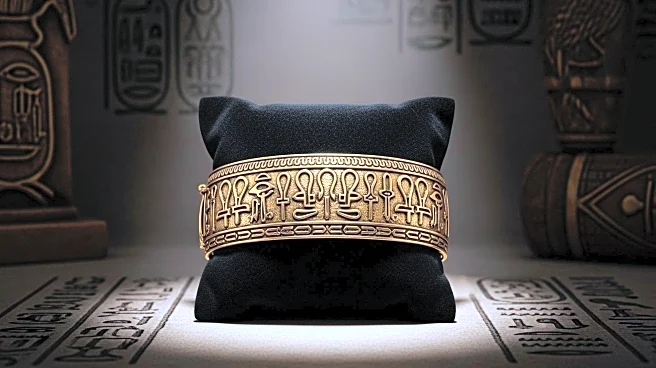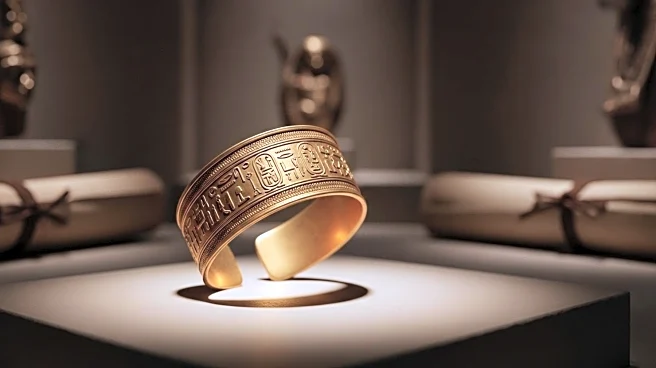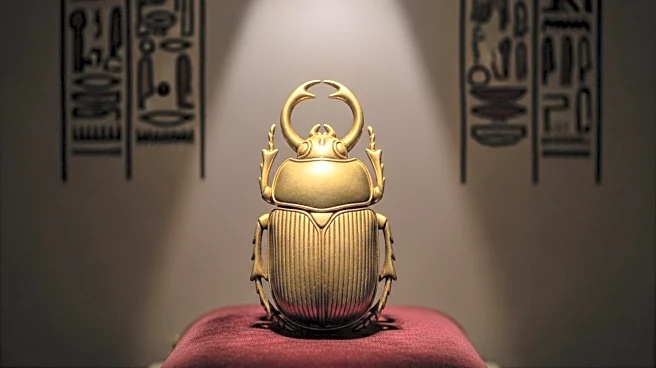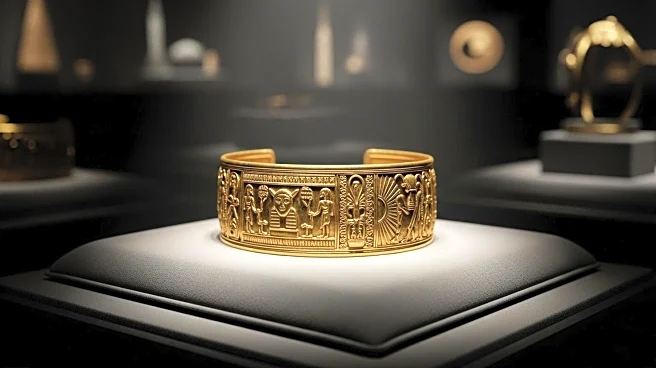What's Happening?
Egyptian authorities have arrested four individuals in connection with the theft and destruction of a 3,000-year-old golden bracelet from the Egyptian Museum in Cairo. The bracelet, adorned with lapis lazuli beads and belonging to King Amenemope, was stolen by a restoration worker who sold it for less than $4,000. The bracelet was subsequently melted down and reshaped into other jewelry, leading to its permanent loss. The Ministry of Tourism and Antiquities has referred the case to public prosecutors and law enforcement agencies to recover the artifact. The theft was initially kept under wraps to aid the investigation, and all Egyptian air, sea, and land crossings were alerted to prevent smuggling.
Why It's Important?
The loss of the ancient bracelet represents a significant cultural and historical setback for Egypt, highlighting vulnerabilities in museum security and artifact preservation. The incident has sparked outrage on social media, with many lamenting the destruction of an artifact that survived for millennia. This case underscores the challenges faced by countries in protecting their cultural heritage from theft and illegal trade. The arrest of the suspects may deter future thefts, but the irreversible loss of the bracelet serves as a reminder of the importance of safeguarding historical artifacts.
What's Next?
Egyptian authorities are expected to continue their investigation to determine if any additional suspects are involved and to recover any proceeds from the sale of the bracelet. The Ministry of Tourism and Antiquities may implement stricter security measures at museums to prevent similar incidents. The case could lead to increased international cooperation in tracking and recovering stolen artifacts, as well as heightened awareness of the importance of cultural heritage preservation.










